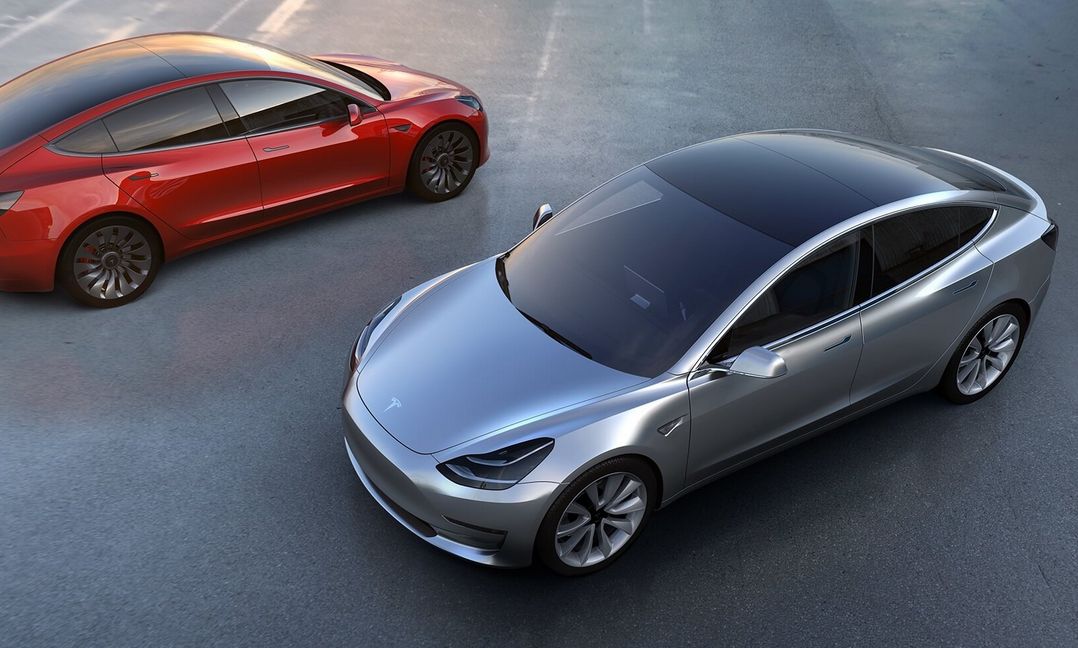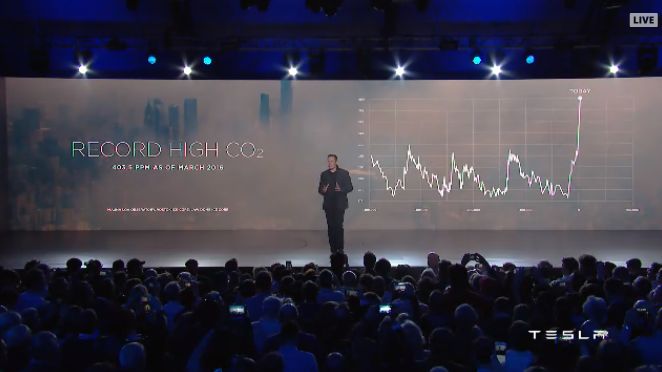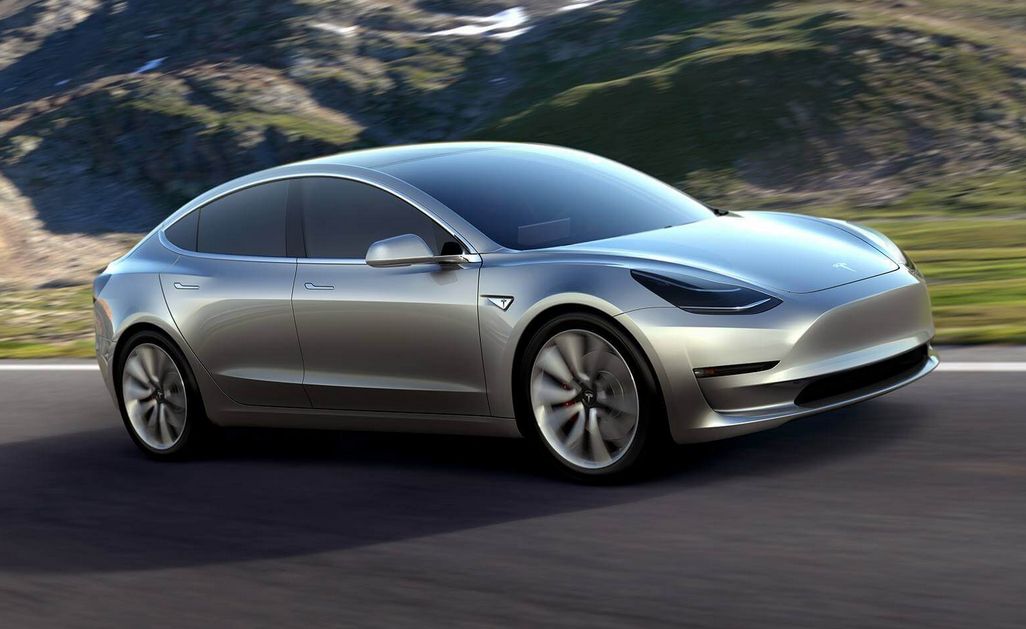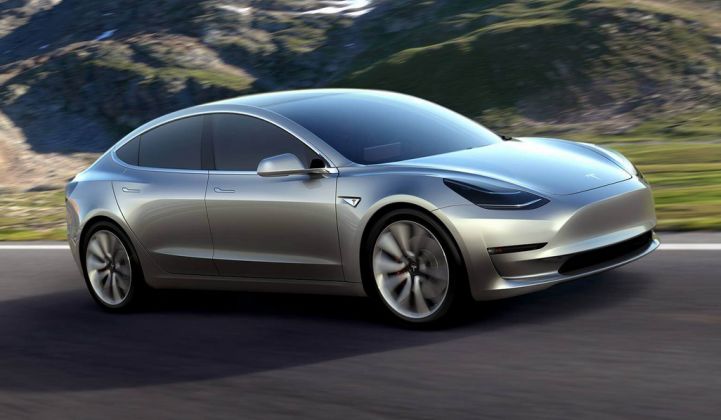Many have high hopes that Elon Musk will deliver on the promise of a stylish and affordable long-range electric vehicle for the masses.
The Tesla Model 3 unveiling on Thursday night was hailed as the most significant automotive event in recent years. It was labeled Musk’s moment of truth; his opportunity to change the world. (No pressure, Mr. Musk.)
The CEO seemed to embrace the high expectations. He opened his speech at Tesla’s Hawthorne facility by referencing climate change and rising global temperatures.
“Why are we doing this? Why does Tesla exist? Why are we making electric cars? Why does it matter? It’s because it’s very important to accelerate the transition to sustainable transport,” said Musk. “This is really important for the future of the world.”
It's not just a tool to help the planet. The Model 3 is a well-styled car, equipped with the latest technology at an affordable price. Plus, it operates on cheap electric fuel.
Taken together, this makes for a very appealing package to many consumers. By the end of Musk's presentation, more than 115,000 people had put down $1,000 to reserve the Model 3 over the course of the day (Musk tweeted the tally had reached 198,000 midday Friday). Lines formed outside Tesla stores hours before they opened. An Australian man who waited outside a dealership in Sydney for 48 hours became the first person in the world to order the electric sedan.

So what exactly will customers get when the Model 3 launches at the end of 2017?
As expected, the car will have a 215-mile range and a $35,000 price tag before incentives. It will also have a number of other snazzy features: All Model 3 vehicles will be able to travel from zero to 60 miles per hour in at least 6 seconds, they’ll be equipped with supercharging capability, and come standard with autopilot technology.
Like the Model S, the Model 3 will have both front and rear trunks, and a five-star safety rating. The launch revealed the 3 will also have a large center touch screen.
Tesla designed the vehicle to comfortably fit five adults by compressing the front instrument panel and moving the seats forward. A single pane of glass from the front to the rear enhances the spacious feeling.
“Someone once asked, 'Can you fit a 7-foot-long surfboard inside?'” said Musk. “The answer is yes.”
As the CEO finished his presentation, a woman yelled, “Elon, you’re my hero!”
"This is not a mass-market car"
There is good reason for excitement around the Model 3. There hasn’t been a successful car startup -- let alone an all-electric car startup -- since the major automakers formed the early 1900s. The Dymaxion and the DeLorean were some innovative attempts, but no company in recent years has been able to get as much traction as Tesla.
Last year, Tesla sold more than 50,000 units of the Model S and claimed nearly 18 percent of the luxury sedan market worldwide -- an impressive feat for a new brand. The Model S is also the world’s best-selling electric car.
Sam Jaffe, managing director at Cairn Energy Research Advisors, an energy storage research and consulting firm, believes Tesla’s distinct mission backed by a strong leader has allowed the company to succeed where others have failed. The strength and appeal of Musk’s vision is also the single factor incumbent car companies underestimated the most.
“Tesla never got into this to make luxury cars,” Jaffe said on a call with reporters earlier this week. “In fact, Tesla says it’s not trying to be a carmaker; it’s trying to completely change transportation, to bring the electric drivetrain to all transportation and potentially…change the world.”

But the success of the Model 3 should not be overstated. Even with a 200-mile range, many sedan buyers will still be hesitant to go electric -- especially if it’s their only car.
The Model 3 is affordable, but still high-end. The vehicle has a $35,000 base price, which drops to $27,500 after federal incentives. Many customers will want to add additional features to take full advantage of Tesla’s technology, bringing the car back up to or above the $35,000 mark. Also, incentives are currently limited to 200,000 cars per manufacturer, a milestone Tesla is quick approaching.
The Model 3 is considered to be part of the entry-level luxury sedan market. According to Jaffe, there are 1.25 million cars sold per year in that market segment, which represents about 3 percent of global car sales.
“This is not a mass-market car. It’s not bringing electric vehicles to the masses; it’s bringing electric vehicles to the next step in the luxury chain. But not the mass market,” said Jaffe.
With that said, 1.25 million cars represents a sizable market. If Tesla can mimic its success with the Model S and capture roughly 18 percent of global market share in three years, it could sell well over 200,000 units.
Calculating Tesla’s expected sales target from previous statements, the company appears to be aiming to sell 300,000 units by 2020. Cairn has a more conservative estimate that Tesla will sell 196,000 units.
“That doesn’t mean we’re predicting failure,” said Jaffe. “That would be a very successful new model launch.”
It likely means that Tesla's story doesn't end with the Model 3.
"A tipping point"
Tesla vehicles are about more than a single company's success. They push other companies into action.
Almost every major automaker currently offers or plans to offer an electric car. Plus, there are now at least 10 new car startups actively developing electric vehicle models for the global market, including Google, Apple, Atieva, Karma and Faraday Futures.
The Tesla Model 3 is “a tipping point” for the automotive industry, said Pasquale Romano, CEO of ChargePoint, which has a network of more than 27,000 electric-vehicle charging stations.
“Auto manufacturers continue to introduce new vehicles, increasing the variety of models at a range of price points, so that people who want to drive an EV don’t have to compromise,” he said. “By 2025, it will be virtually impossible to buy a car without a plug.”
Earlier this year, General Motors’ unveiled the Chevy Bolt -- a 200-mile-range electric vehicle that sells for $37,000 before incentives. The Bolt recently went into production, putting GM at least a year ahead of Tesla. But the Bolt could be a tough sell at a higher price point and with fewer luxury features than the Model 3.
As Tesla prepares to launch the Model 3, it also plans to ramp up battery production at the Gigafactory, double its Supercharger network to 7,200 stations, and sell at least 80,000 vehicles in 2016.
Keeping up vehicle sales is an important part of the overall story. Tesla recently stopped reporting the number of reservations for its new Model X SUV and demand is believed to be low, Seeking Alpha reports. Tesla will need to see high sales in order to cover its growing expenses.
The unveiling of the Model 3 will help in this regard. Tesla raised $115 million from reservations in a single day, and that number could easily double in the coming weeks. While the deposits are refundable, Tesla is likely to hang on to a large chunk of money -- money that it doesn’t need to pull from its asset-backed line of credit.
"A part of history"
Despite all of the hype about changing the world, a number of people putting down $1,000 reservations for the Model 3 in Santa Monica, California said they were more focused on fuel costs and style than lowering their carbon footprint.
Dozens of people were lined up outside of Tesla’s Third Street Promenade store to make Model 3 reservations at 7 a.m., hours before the store opened. At 6 p.m. there was still a steady stream of customers coming in to make deposits.
In a span of 30 minutes, multiple families stopped to take photos in front of the store, as though they were at Disneyland.
Amid the excitement, a number of people putting down deposits said they were mostly interested in the pragmatic aspects of owning a Model 3.
Cathy, an account manager, said she commutes 60 miles a day and pays $5,000 a year in fuel. Cutting down that payment by switching to an EV could effectively pay off the car. Another customer, Gus, said he drives 150 miles a day and could also save thousands of dollars a year by driving on electricity.
“It’s cool to be a part of history, and to have a car that’s probably better and cheaper than a lot of other luxury sedans,” said Scott, a Santa Monica resident who works in advertising. “Plus, the deposit is fully refundable, so why not?”
A neurosurgeon named Venk put down two deposits, one for himself and one for his wife. He also likes the value proposition. But for him, the decision really came down to environmental concerns.
“There is no doubt at all -- we are burning our planet,” he said.




